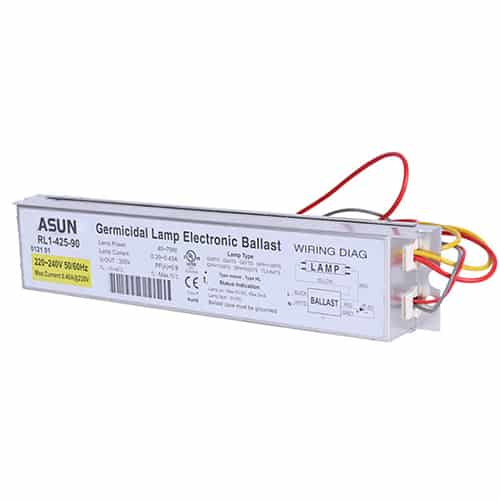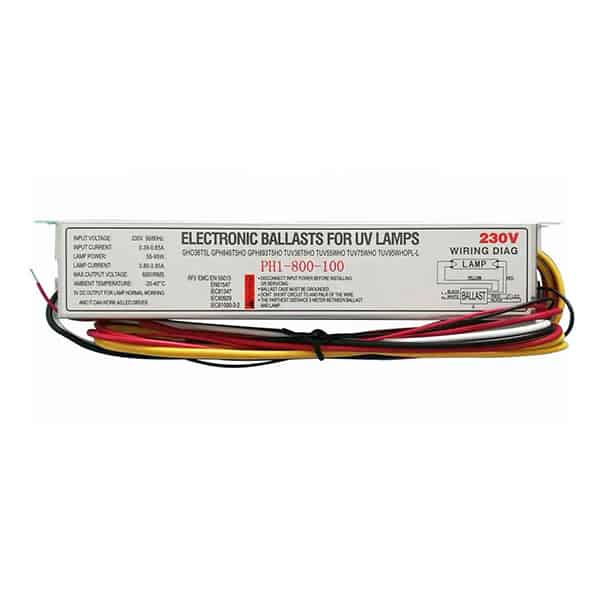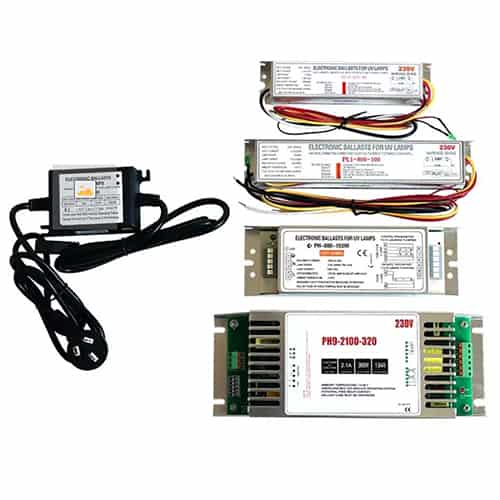Fluorescent tube lights are used a lot in houses, businesses, and other places because they use less electricity and make a lot of light. But, they need a ballast to control the electricity that goes through them. In the past, these lights used magnetic ballasts, but they had problems with flickering, making noise, and using too much electricity. Then, people started using electronic ballasts, which don’t have these problems and make your lights work better.
An electronic ballast controls the electricity going through the fluorescent tube light by changing and controlling the electricity that comes from the wall. This makes your lights work better, stops them from flickering, and makes them use less electricity than the older magnetic ballasts. Electronic ballasts make your lights better by using a lot of electricity and making your lights use less electricity.
Now, let’s talk about what electronic ballasts do, why they’re good, and how they make your tube lights work better and use less electricity.
What Is an Electronic Ballast?
An electronic ballast is a device used in fluorescent lighting systems to regulate the electrical current that powers the lamp. It plays a crucial role in starting the tube light and maintaining a stable electrical flow once the lamp is running.
Definition
An electronic ballast ensures that the tube light receives the correct amount of electrical current and voltage needed for operation. It converts standard mains voltage (AC) to a higher frequency alternating current (AC) suitable for fluorescent lamps. This conversion allows the tube light to ignite quickly and operate efficiently, without the flickering and humming often associated with magnetic ballasts.
Basic Function
The basic function of an electronic ballast is to provide the necessary power to start the tube light and then regulate the flow of current to keep the light operating smoothly. By controlling the electrical current, the ballast ensures that the tube light operates efficiently and maintains a steady, bright light without fluctuations.
Why It Replaced Magnetic Ballasts
Magnetic ballasts, which were used in older fluorescent lighting systems, had several drawbacks. They were noisy, prone to flickering, and less energy-efficient. Magnetic ballasts operated at the standard electrical frequency of 50-60 Hz, which caused the light to flicker and sometimes produce an annoying hum. These inefficiencies led to the development of electronic ballasts, which operate at much higher frequencies (typically 20,000 Hz or higher) and offer better performance in terms of lighting quality, energy savings, and overall reliability.
How Does an Electronic Ballast Work in Tube Lights?
The way an electronic ballast works in tube lights can be broken down into several key steps. The ballast converts and regulates the incoming electrical power to ensure the tube light operates efficiently and consistently.
Step-by-Step Process
- AC to DC Conversion:
- The first step in an electronic ballast is to convert the alternating current (AC) supplied by the mains electricity into direct current (DC). This is achieved using a rectifier inside the ballast, which converts the incoming voltage (typically 120V or 240V AC) into DC.
- DC to High-Frequency AC:
- Once the current is converted to DC, the ballast uses an inverter to change the direct current back into alternating current, but this time at a much higher frequency. Instead of the standard 50-60 Hz used by magnetic ballasts, electronic ballasts operate at frequencies between 20,000 and 60,000 Hz (20-60 kHz). This high-frequency AC is crucial for eliminating flickering and improving the efficiency of the lamp.
- Ignition of the Tube:
- After converting the current to high-frequency AC, the ballast sends this current to the electrodes of the tube light, which excites the gas inside the tube. This excitation creates an arc between the electrodes, ionizing the gas and causing it to emit ultraviolet (UV) light. The UV light then excites the phosphor coating inside the tube, which produces visible light.
- Current Regulation:
- Once the tube is lit, the electronic ballast regulates the current flowing through the lamp, ensuring that it remains at a stable, safe level. This prevents the tube light from overheating or drawing too much power, which could shorten the lamp’s lifespan or cause it to fail.
Advantages of High-Frequency Operation
One of the major advantages of electronic ballasts is their ability to operate at high frequencies. Operating at 20,000 Hz or higher, the ballast eliminates the visible flicker often seen with magnetic ballasts, which operate at the lower frequency of 50-60 Hz. This high-frequency operation also reduces the audible humming noise that was common with older lighting systems, providing a quieter and more pleasant lighting experience.
Key Benefits of Electronic Ballasts in Tube Lights
Electronic ballasts offer several important benefits over magnetic ballasts, making them the preferred choice for modern fluorescent lighting systems.
Energy Efficiency
One of the primary advantages of electronic ballasts is their energy efficiency. These ballasts use significantly less power than magnetic ballasts, typically reducing energy consumption by up to 30%. By regulating the current more precisely and eliminating the need for constant preheating of the electrodes, electronic ballasts help lower electricity costs, especially in large-scale lighting installations where many tube lights are used.
Reduced Flicker
Because electronic ballasts operate at high frequencies, they eliminate the flickering that can occur with magnetic ballasts. This not only improves the quality of the light but also reduces eye strain, making electronic ballasts a popular choice for environments like offices, classrooms, and hospitals where consistent, flicker-free lighting is essential.
Lower Heat Generation
Magnetic ballasts tend to generate a lot of heat during operation, which can reduce their efficiency and cause them to wear out more quickly. Electronic ballasts, by contrast, produce much less heat, making them safer and more durable over long periods of use. Lower heat generation also reduces the overall cooling requirements in environments where multiple lights are in use, contributing to further energy savings.
Instant Start
Many electronic ballasts offer an instant start feature, meaning that tube lights turn on immediately when switched on, without any delay or flicker. This is especially useful in commercial and industrial settings where lights need to come on quickly and reliably without waiting for the lamp to warm up.
Silent Operation
Unlike magnetic ballasts, which can produce a noticeable humming sound, electronic ballasts operate silently. This makes them ideal for environments where quiet operation is important, such as in offices, schools, hospitals, and libraries.
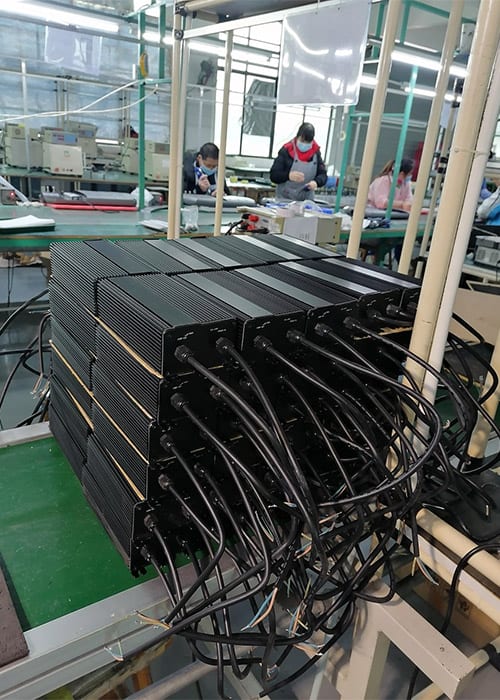
Differences Between Electronic and Magnetic Ballasts in Tube Lights
Understanding the differences between electronic and magnetic ballasts is crucial when deciding which type of ballast to use in your tube lighting system.
Efficiency
Electronic ballasts are far more efficient than magnetic ballasts. By operating at higher frequencies and providing better current regulation, electronic ballasts reduce energy consumption and help lower electricity bills. Magnetic ballasts, on the other hand, are less efficient and consume more power, particularly due to their lower frequency operation and the need to continuously preheat the lamp’s electrodes.
Flicker and Noise
Magnetic ballasts often cause flickering and produce a noticeable humming sound due to their 50-60 Hz operating frequency. Electronic ballasts, operating at higher frequencies, eliminate these issues, providing smooth, flicker-free lighting and silent operation.
Lamp Life
Electronic ballasts can also help extend the lifespan of the tube light. By providing a stable current and reducing power surges or fluctuations, they reduce the stress on the lamp’s electrodes, helping the tube light last longer. In contrast, magnetic ballasts can cause early lamp failure due to inconsistent power regulation and the extra wear caused by preheating.
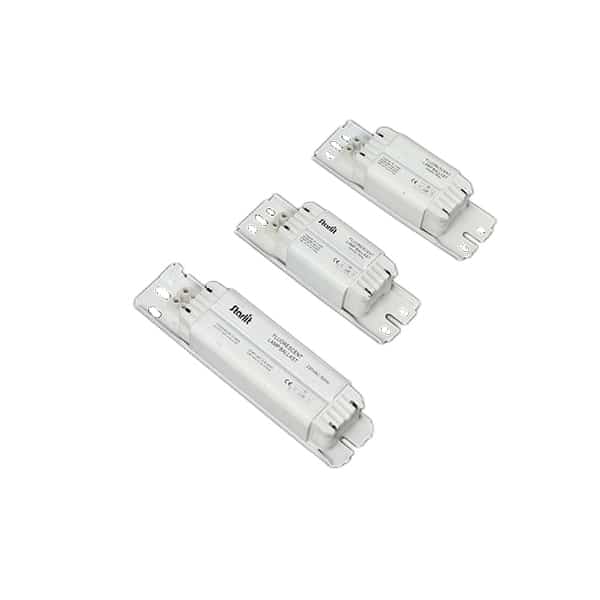
How Electronic Ballasts Contribute to Longer Lamp Life and Energy Savings
The benefits of electronic ballasts go beyond energy efficiency and flicker reduction. They also contribute to longer lamp life and reduced maintenance costs, making them a smart investment for both residential and commercial lighting systems.
Stable Power Supply
Electronic ballasts provide a stable power supply, preventing the voltage fluctuations and surges that can damage tube lights. This stability is key to extending the lifespan of the lamp, ensuring that it operates smoothly over time without suffering from frequent burnout or failure.
Lower Energy Costs
By reducing energy consumption, electronic ballasts can significantly lower overall electricity costs, particularly in large-scale lighting installations. The energy savings achieved through more efficient operation and lower power consumption can lead to noticeable reductions in utility bills over time.
Reduced Maintenance
Because electronic ballasts help extend the lifespan of tube lights and have fewer components that can fail, they reduce the need for frequent maintenance and replacement. This not only lowers costs but also minimizes downtime in environments where lighting is critical, such as in factories, retail spaces, and offices.
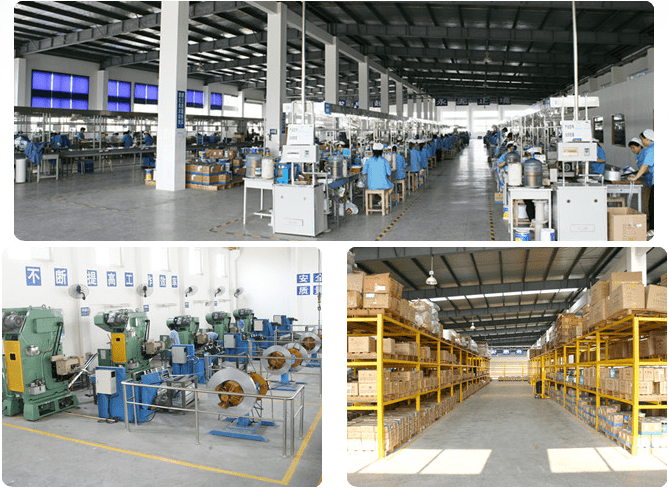
Applications of Electronic Ballasts in Tube Lights
Electronic ballasts are used in a wide range of applications, from commercial and industrial settings to residential lighting systems.
Commercial and Industrial Use
In large commercial and industrial settings, such as offices, factories, and warehouses, electronic ballasts are invaluable for their energy efficiency and reliable performance. These environments typically require consistent lighting for long hours, and electronic ballasts provide the stable, efficient operation needed to keep energy costs low and lighting quality high.
Residential Lighting
As energy efficiency becomes increasingly important in homes, electronic ballasts are becoming more common in residential lighting systems. Homeowners appreciate the quiet operation, flicker-free light, and lower electricity bills that come with electronic ballasts.
Educational and Healthcare Settings
In schools, hospitals, and laboratories, where clear, flicker-free lighting is essential for productivity and well-being, electronic ballasts provide the ideal solution. They ensure that the lighting is bright, consistent, and comfortable for occupants, reducing eye strain and improving focus.

Final Words
Electronic ballasts have made tube lights work better by making them use less electricity, making them not flicker, and being quiet. They make your lights work better by using a lot of electricity and making them use less electricity. They are the best choice for lights in houses and businesses because they make your lights last longer, use less electricity, and need less work.

